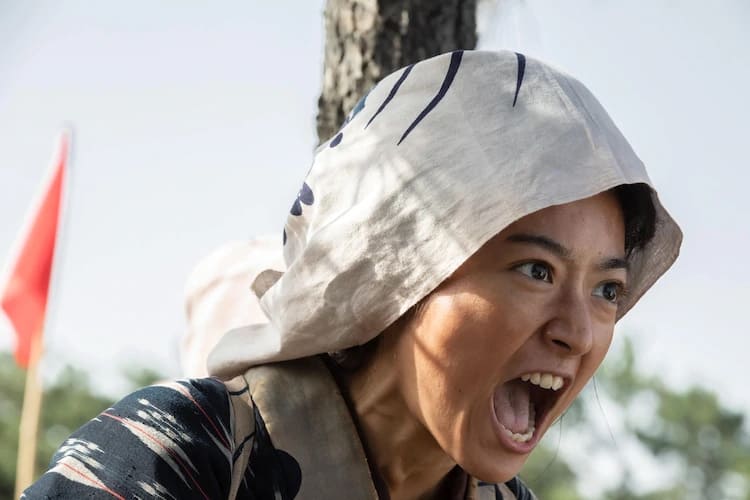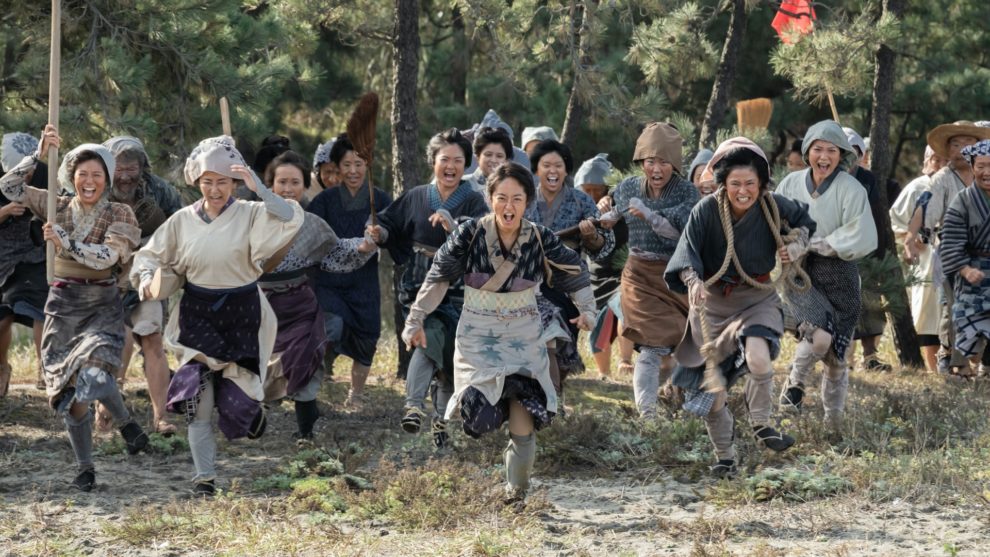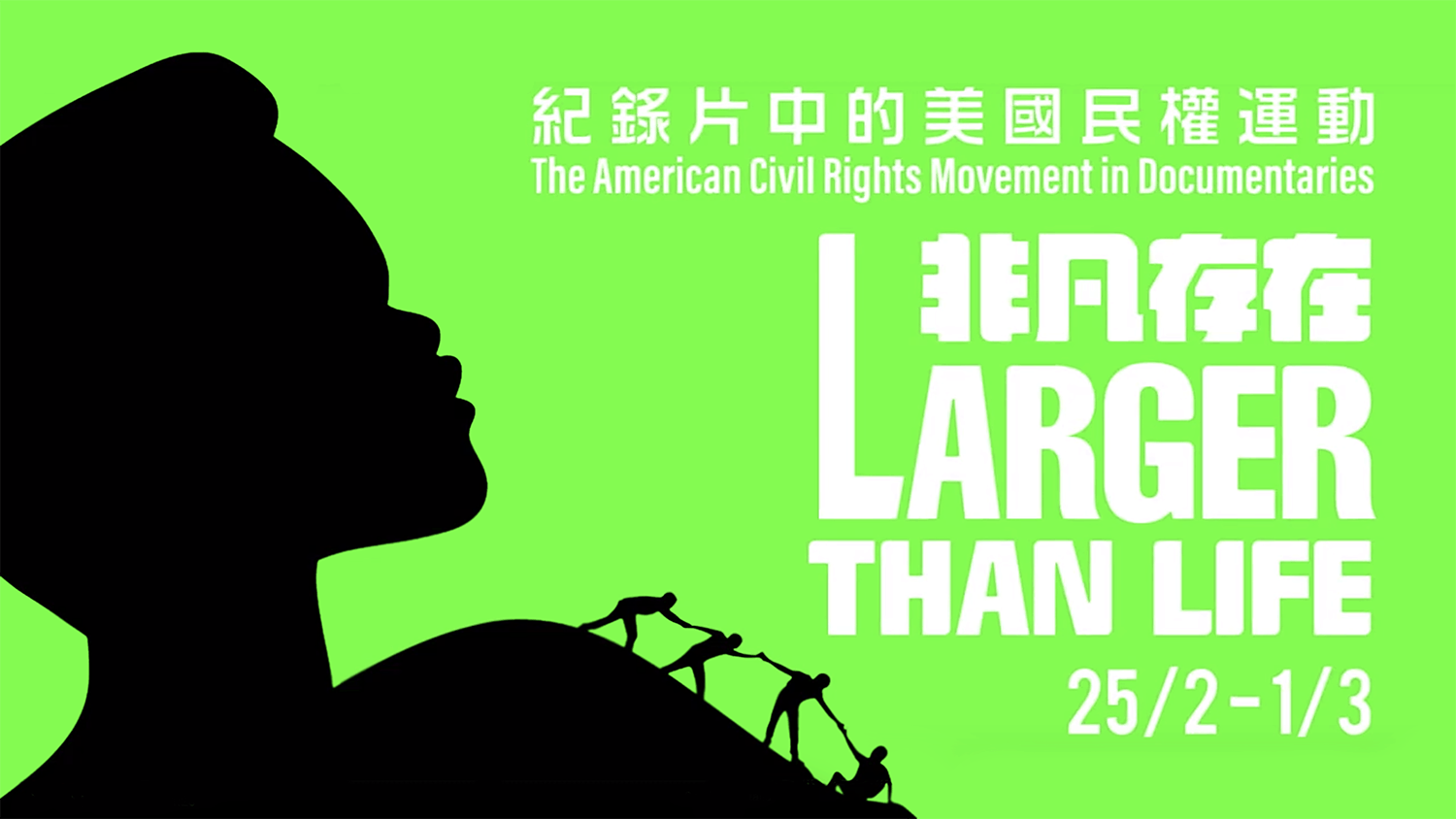Translated by Lukasz Mankowski
Katsuhide Motoki, born in Toyama Prefecture in 1963, studied at Waseda University and in the United States. In 1987, he began working as an assistant director at Shochiku for Keisuke Kinosita and Hiroshi Teshigahara, among others. He had his directorial debut in 1998 with “Tenamonya Shosha”. His comedy “Samurai Hustle” received an award at the 2015 Japan Academy Awards, while his fame grew even bigger with “Recall”. Motoki also works as a producer (e.g. Gonin).
On the occasion of “Angry Rice Wives” screening at Toronto Japanese Film Festival, we speak with him about the place of women in Japanese society then and now, the events that inspired the film, the cast and Mao Inoue, his visual approach, and many other topics.

What was the inspiration behind shooting Angry Rice Wives?
Since Japan is a country where there is still a strong impression of the dominance of men over women, I thought that it's important and valuable to film the story of women who fought for their lives over 100 years ago. To this day, there wasn't much record about these events, which of course look interesting on paper, but what's more important, these women somehow made a huge impact on society.
Is there a parallel with the current situation of women in Japan, that scores among the lowest in gender gap ranking among the developed countries?
Although there have been several attempts on the institutional ground to make a change in this regard, such as the Equal Employment Opportunity Law for Men and Women from 1986, there's still a long way to go for achieving gender equality in Japan. We can see many talented women who give up on their career opportunities. This is because of the struggle with the traditional preconception of the role of women in society and the dominance-seeking men-oriented organizations. I strongly believe the situation from 100 years ago is similar to the one we have now.

The film is based on actual events. What kind of research did you do on the topic?
Indeed, I have read plenty of books concerning these events, but what's interesting is that even though some of the researchers presented these events as an example of one of the first women movements in Japan, the local perception of the rebellion among the community included a narrative of a “shameful behaviour against the authority”. My viewpoint is that I wanted to put aside all of the prejudice and focus on trying to research only the facts and approach the reality with objectivity in mind, and then apply that to my script.
The cast emerges as one of the best assets of the movie. Can you give us some more details on the topic?
We aimed to make an entertaining film that would be also compelling as a dramatic narrative about collectivity, and one of the elements we focused on, was the cast that would be able to express aggressiveness and persuasive power. At the same time, I tried to carefully direct the characters so that they would not overlap too much or resemble each other too closely.
How was your cooperation with Mao Inoue in particular?

She's an actor whom I can trust and rely on, so there wasn't a lot of directions and details coming from my side. Her performance beautifully reflected on the repressiveness of the environment and the aspect of “women can't express their opinion well” of her play was brilliant. She's also very capable of expressing her feelings just through her eyes so that she doesn't even have to speak at all.
How was your approach in the many scenes where a plethora of actors move all together on the screen?
All these women were the extras that we invited from Toyama Prefecture, where the actual events took place. Unexpectedly, everyone enjoyed playing in the film. They seemed to be so overwhelmed by the sense of liberation of the film, that they would constantly appear on the set smiling, so I had to repeatedly call them out through the speaker: “Don't laugh as you are in a desperate situation! You're trying to protect your families!”.
The film focuses intently on the nature of people in small villages, highlighting that they are gossipy, meddlesome, always suspicious of strangers but also always eager to help their neighbour. Do you think
these aspects are the same today, and how do you think they differ from the people living in urban centres?
The aspect of human nature you're pointing out seems to be indeed lost in modern times, but even though the communication advances towards the global, people are still longing for the local – and thus, create small communities. One can choose to live in a small village, where they face annoying relationships regularly; or escape to the city and enjoy its comfort in solitude. Whatever you choose, human nature stays the same. That's what I wanted to do with my film. That's its message.

Can you give us some more details about the location the film was shot?
The location we selected is the coast of Toyama prefecture in Japan, where the “rice riots” occurred. 100 years ago, this coast was a port for sending inland rice to Japanese people working in the outer regions, north of Hokkaido. It was a town of fishermen struggling with poverty, with men going far way to find their fish. They remained absent for a long time, while women had to work as heavers to support their families. On the other hand, we also included some digitally remodelled areas of Kyoto from the period, and we made good use of VFX to shoot it.
How was your cooperation with DP Yasuhiko Minami and what was your overall goal in the visual aspect of the movie, particularly regarding the colouring?
We wanted to have a glimpse of the experience of “night at the rural” from 1917 Japan. That's why we used places with electric lights but also interiors where we could only use candles. The overall structure was designed in a way that one would not feel uncomfortable comparing to the natural light during the daytime. What we paid attention to in particular, was how the suntanned skin of the women labourers look like. That's why we made several adjustments during the post-production so that the skin would look as realistic as possible.
Are you working on anything new at the moment?
I had to stop several projects due to the corona outbreak. Since it seems we entered a new era, I'm currently asking myself what kind of film I want to shoot next, or rather, what kind of films the audience will seek in these disturbing times. That being said, with my next film I'm considering trying to reflect on Japanese society through a mystery film.















